Church History
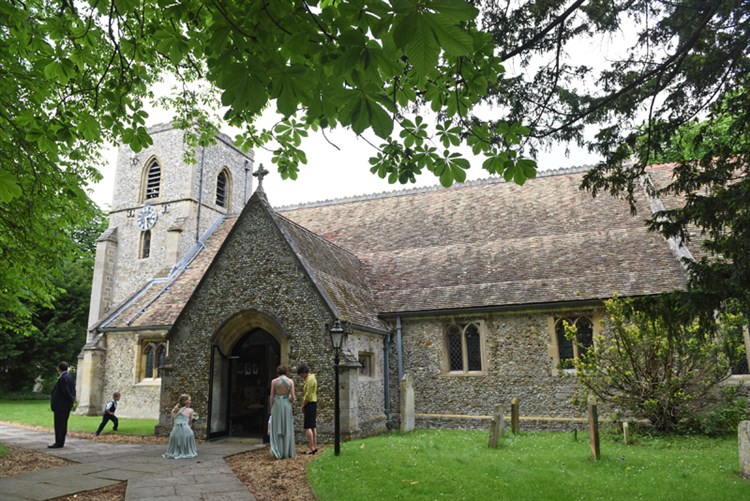 Photograph lyndseychallis.com
Photograph lyndseychallis.com
FOR AN INVESTIGATION INTO THE CHURCH MONUMENTS, SEE HERE
FOR A DESCRIPTION OF THE BUILDING STONE OF THE CHURCH, SEE HERE
The foundation of this church goes back to a grant of land by King Aedred in the year 970. The evidence we have shows that before this present building was built early in the 12th century, there was a Saxon stone one, which was rebuilt after the Norman conquest in the new style brought over from the continent.
In the 14th century this earlier church was added to and substantially rebuilt in the newer styles of the time but incorporating parts of the earlier building.
Further alternations were made during the Victorian restoration of 1866, which closed the church for six months. Major work was carried out to the roof, floor and pews.
THE SOUTH PORCH
You enter the church by the south porch, a fine, quite large feature of the building. In medieval times and for centuries after, it was here that the first part of the baptismal, marriage and burial services was conducted, business transactions were arranged, documents signed and affidavits sworn. It may also have been used as a classroom for young children. Public notices were posted there as they are today.
There may have been a small room called a parvise or priest’s room above the porch but, when the porch was rebuilt in 1866, it was dismantled, allowing the much higher porch roof to be built in its place.
The glass doors were installed in 1970 for the Millennium celebrations of the church’s foundation. They were designed by Colin Shewring and were etched by David Peace.
SOUTH AISLE
At the west end of the south aisle is the large iron-bound parish chest with its carrying rings and locks, originally used for storing village records and valuables. It dates probably from the early 15th century. Its five locks were a safety precaution against theft, each of the keys being held by a different person, so that the chest could not be opened unless all were present.
Also in the south aisle are a brass which records 40 years service by a former verger, Frederick Wisby and a sculpture of the church’s patron saint St Andrew given in memory of Mabel Phillips who died in 1963.
At the east end of the south aisle is a small chapel which is linked with the parish of St Andrew, Nachingwea in Tanzania. Its piscine is set in the south wall nearby. The altar table, which dates from the 17th century, supports many carvings, chalices and a Last Supper donated by the people of Nachingwea.
The window of the chapel shows an Annunciation designed by Christopher Webb and given in memory of Eivira Linda Bidwell of Fox Hill. Webb's mark may be seen in the lower right of the window. Images are below. This chapel was used as the Lady Chapel from 1939 to 1987.
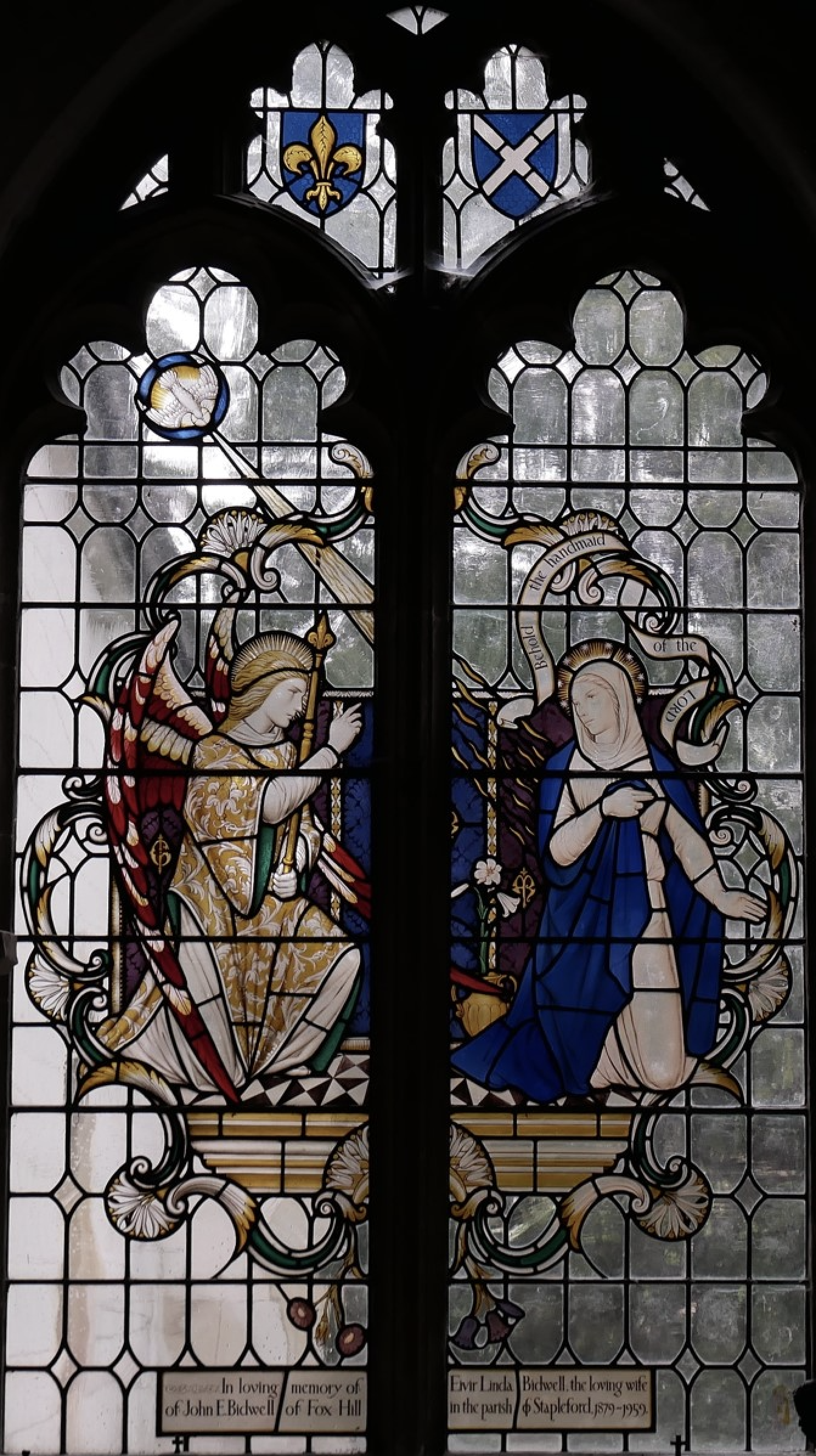
Annunciation: Christopher Webb.
Photograph Henry Hinchcliffe
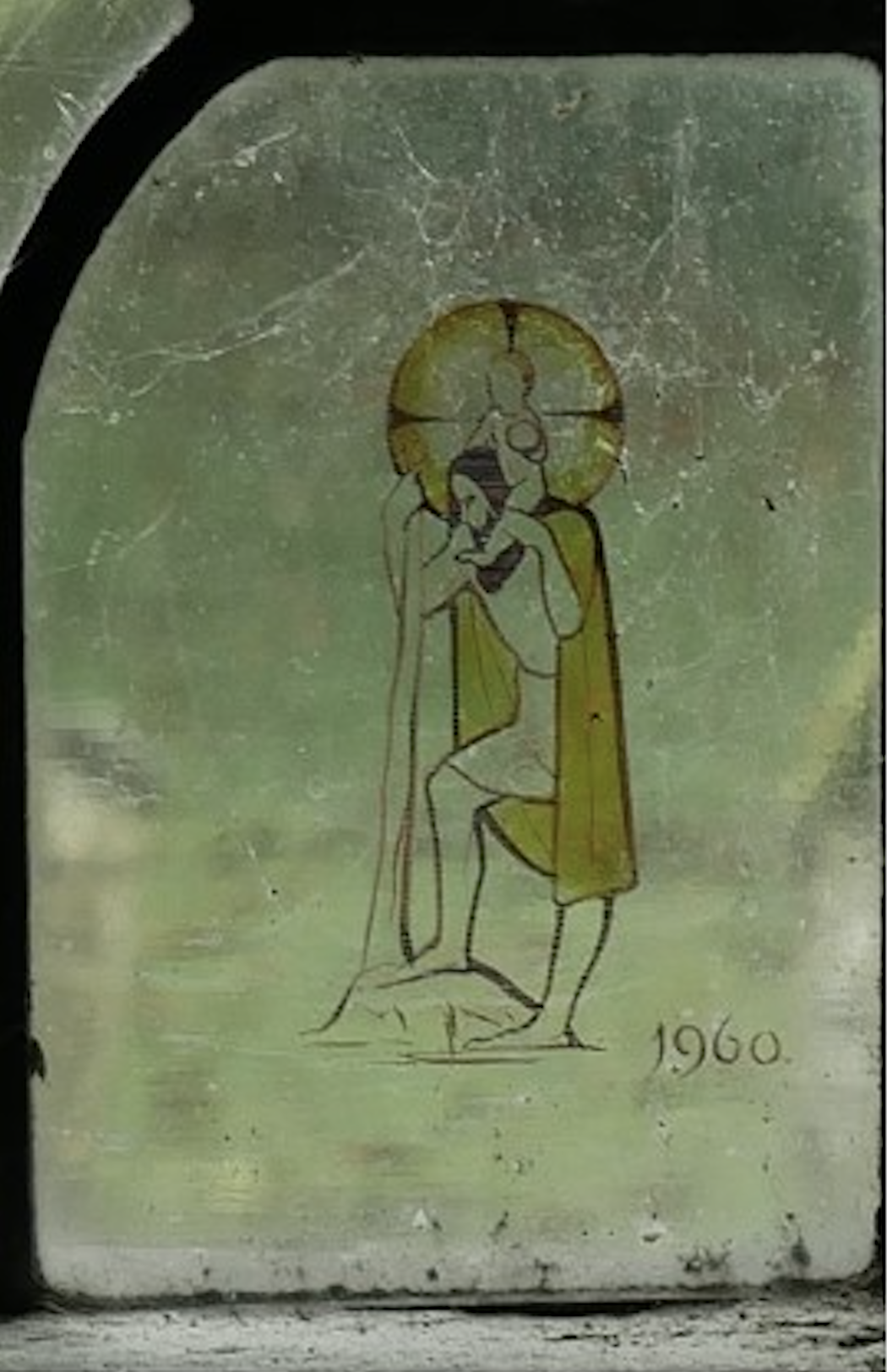
Annunciation: Christopher Webb
Photograph Henry Hinchcliffe
NORTH AISLE
At the east end of the north aisle is a transeptual chapel now with a piscine damaged during the Commonwealth times and memorial tablets to the family of the Duke of Leeds who lived at nearby Wandlebury Manor.
The Perpendicular windows are of the 15th century. This chapel became the Lady Chapel when the organ was removed in 1987. The altar was made by Frank Coe in memory of Bess Winfield, whilst the light fitting above was originally made as a model of the Ely Cathedral Octagon by Douglas Phipps, another local craftsman and adapted by Chris Cooper.
At the entrance of this chapel on the corner of the north wall is a statue of St John the Evangelist in memory of Gwyneth Caton the wife of a former vicar. This, like the one of St Andrew opposite is by John Skelton a colleague of Eric Gill. The east window of this chapel is a memorial to Ray Barnes twice a former churchwarden; the coloured lights represent the Ascension.
The north wall of this aisle supports first world war memorial brasses to members of the families of Colchester and Chalk. A needlework tapestry is a memorial to six members of the crew of a Wellington bomber which crashed in flames in the village in September 1941.
The memorial flanked by the British Legion flags is the principal one to the men of the village who gave their lives in the First World War 1914–1918.
A door leads into the choir vestry built in 1926. It was extended in 1978 and in 1988 a staircase and upper floor were added to serve as a clergy vestry.
A list of priests from 1230 to the present is nearby. On the window ledge of the west window of the north aisle are two pieces of stonework from the early church in Stapleford. One is part of a Saxon churchyard cross, the other is a small early Norman grave cover.
THE BAPTISTRY
This has a maze floor of black and red tiles designed and put in place in 1987 by Steve Jones, framing the early 14th century font which is octagonal with simple tapering lines. The font cover of ash and oak made by Frank Coe has a quotation from T. S. Eliot’s “Little Gidding”. Above the baptistry space is a large organ gallery and pipe façade by William Johnson and company; it was built out from the bell ringing floor in 1988 and is a dominating feature of the church’s interior. Much of the pipework comes from a Father Willis organ formerly in Malmsbury Abbey.
THE NAVE
Good, solid octagonal pillars support the wide pointed arcade of arches of the Perpendicular period nave. There is no good building stone in Cambridgeshire and so the five-bay arcade is built of the local ‘clunch’ a hardened form of chalk but soft enough to be carved with a pen knife (as evidenced by ancient graffiti not completely removed by the Victorian restorers).
The arches are quite plain except for two in the south eastern part of the nave which are enriched by some modest moulding and are a little wider, reflecting a change of plan at some stage of the early rebuilding. The capitals are all of the usual 14th century design. The roof is supported by a mass of very elegant Victorian timbering, which although originally painted is now plain.
In front of the chancel arch is a memorial brass to William Lee of Batley, Yorkshire who was vicar from 1574 to 1617. He was the founder of Batley Grammar School in 1612. This is an interesting example of a late brass memorial made at a time when the art of engraving was in decline. A brass rubbing of it is hanging in the south aisle.
The choir stalls designed and made by Luke Hughes and company of Covent Garden in London in 2006 together with the organ console, pulpit and lectern are all moveable to accommodate an orchestra and chorus for the excellent concerts which are held regularly in this church. The pulpit panelling is all that remains from a former three decker pulpit of the 17th/18th century.
THE CHANCEL
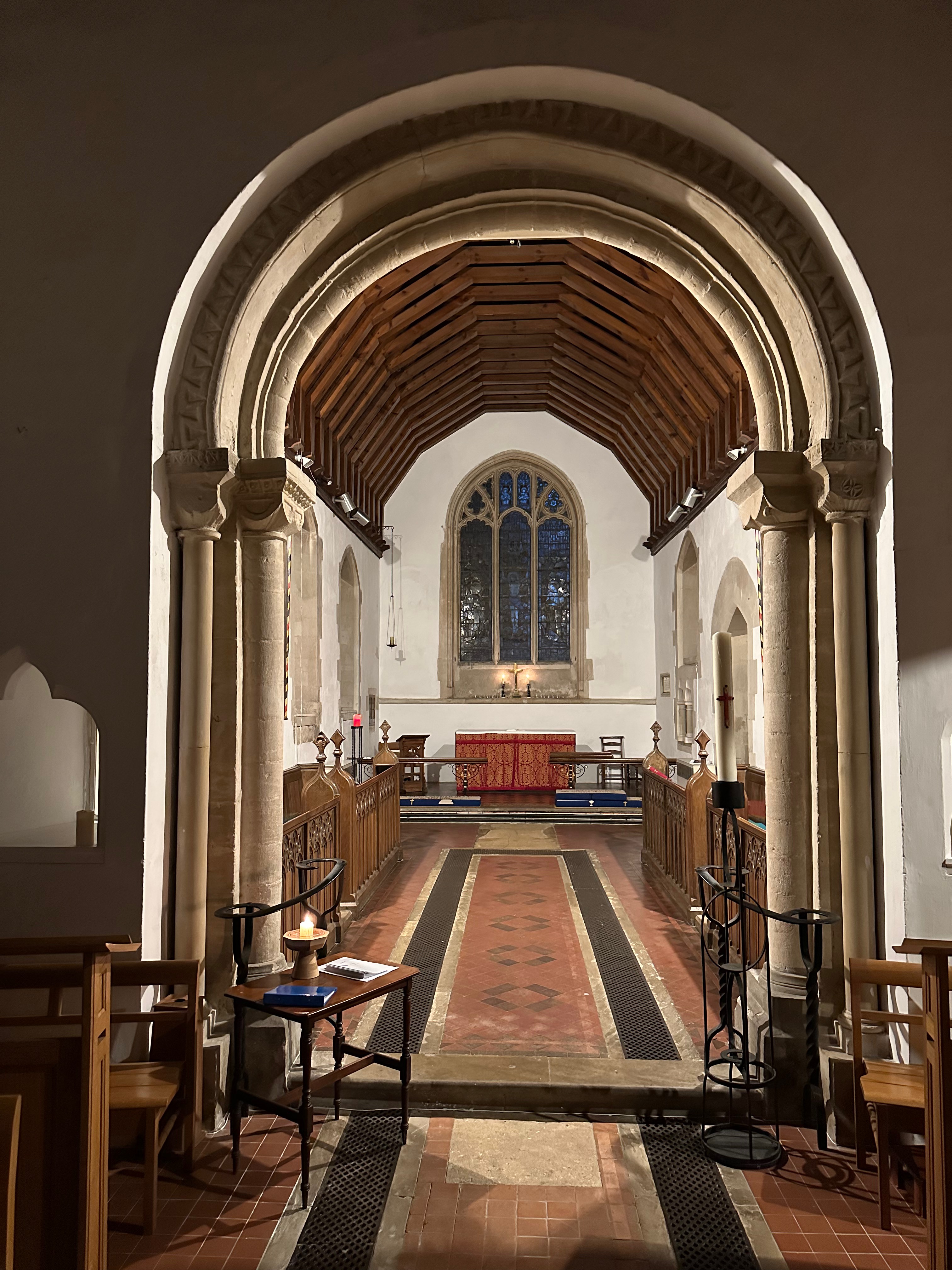
The very fine Norman chancel arch is all that remains of the 12th century church. It has zigzag ornamentation and is supported by enriched engaged columns (half columns attached to the walls). Strangely, the ornamentation on the north and south side columns is different, perhaps carved by different masons. One of the respond capitals has a recessed scallop motif with beading and a studded abacus (the top of the capital). (A respond is a half pier against a wall supporting one end of an arch). Another capital has ornamental trefoils both on its abaci and scallop faces which have fluted undersides.
On either side of the arch are hagioscopes, sometimes better known as squints. These were to allow more members of the congregation to see what was taking place in the chancel and at the altar during Mass. In the past the people clustered around the chancel arch for there were no seats.
The chancel is an enlargement of an earlier 13th Century one with three lancet windows of that period. The beautiful East window is a 15th century addition with good perpendicular style tracery. The coloured glass by Clayton Bell dates from 1882 and is in memory of Henry Collier and his daughters Ellen and Jane.
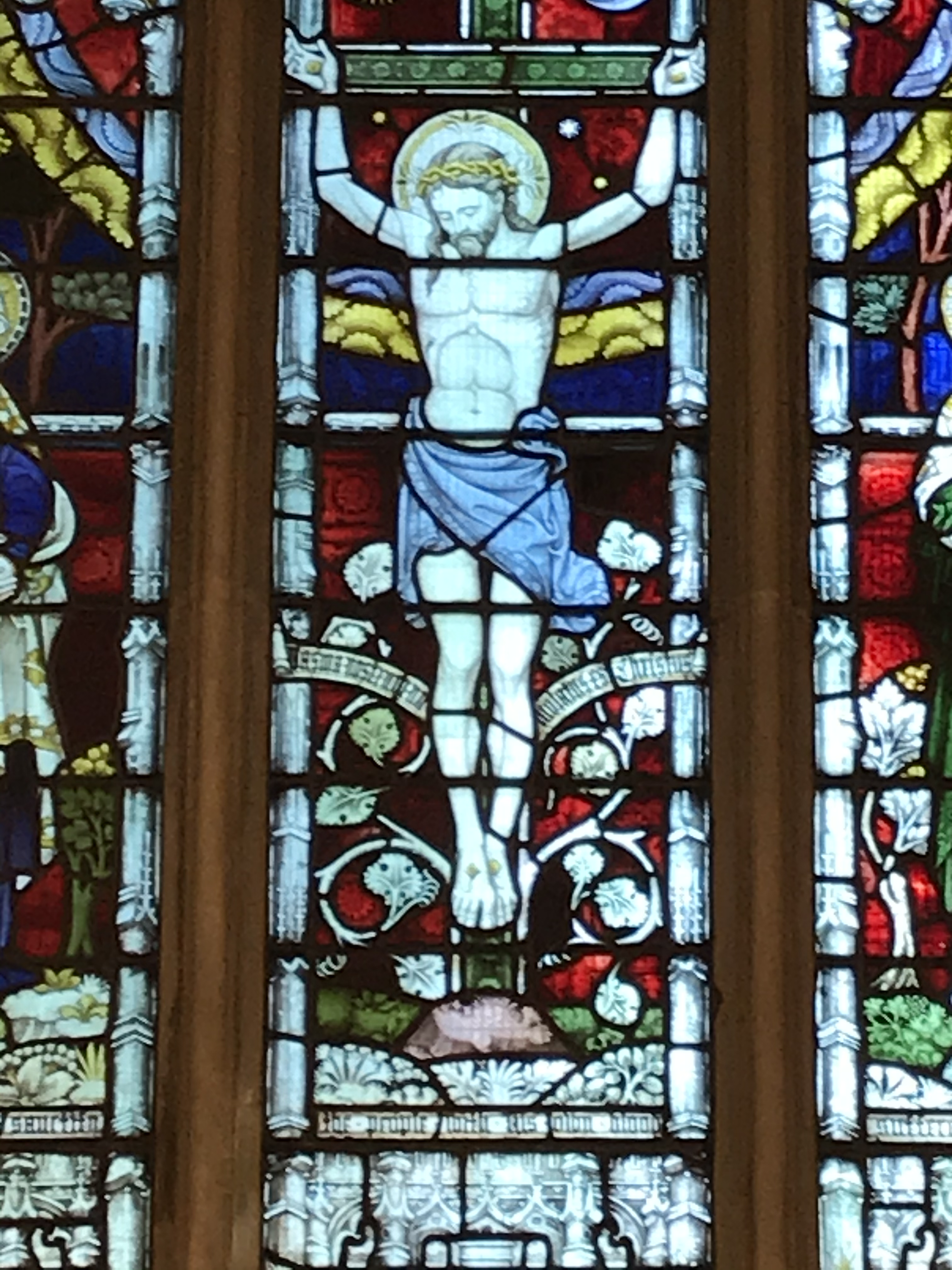
An early English double piscine for washing communion vessels and plate after Mass is set in the south wall whilst opposite in the north wall is an aumbry formerly used for storing communion vessels and plate when not in use. It is now used for the reservation of consecrated bread and wine for use in emergencies. The white light in the hanging lamp was given in memory of Mary Dean.
Two large boards, one on each wall, contain the ten commandments. Formerly mounted on the east wall they were painted by the daughters of one of the Victorian vicars. They were restored in 2024.
A part of one medieval stall on the south side has the date 1697 roughly carved on it, but is thought to have no real significance as the stall is itself probably much older. Just below the altar rails is a memorial slab for members of the Joscelyne family from the early 18th century.
OTHER FEATURES
In the belfry is a ring of six bells, one of them dating from 1654. Two others of 1622 were recast in 1911 when a sixth bell was added. They are regularly rung for Sunday services and special occasions by a dedicated band of ringers.
A special feature of the church is the hassock and cushions designed principally by Ruth Mantle and worked by members of the congregation as part of the church’s millennium in 1970 and for the new millennium in 2000. They illustrate incidents and scenes from the history of Stapleford.
THE EXTERIOR
The 14th century tower has large supporting butresses mostly made of Barnack stone. Much of the exterior stonework is a mixture of Jurassic limestones, Ketton, Ancaster, Clipsham and Barnack from quarries controlled at one time by Ely Abbey. A few curious circular stones in the tower walls are thought to be from the former Saxon church. Set in the west face of the tower is the oldest tombstone in the churchyard. The tower is capped by a small spire of the kind often referred to as a Hertfordshire spike. On the south and west faces of the tower is a chiming clock marking each quarter hour.
The nave roof forms a continuous sweep over the aisles. The outer aisle walls are a typical mixture of local flint and river terrace cobbles of various rock types but in contrast the chancel walls are faced with Portland limestone, part of a total refurbishment in the middle of the 20th Century by the then Lay Rector, Corpus Christi College.
Down the path, past the east end of the church, is a lych gate, on the sides of which are the names of the men of the village who gave their lives in the Second World War 1939–1945, together with verses in grateful memory of their sacrifice.
This beautiful building is loved by present day congregations and members of the village who serve in it and maintain it.
Based on A History of the Church of St Andrew Stapleford by Dennis Doyle.